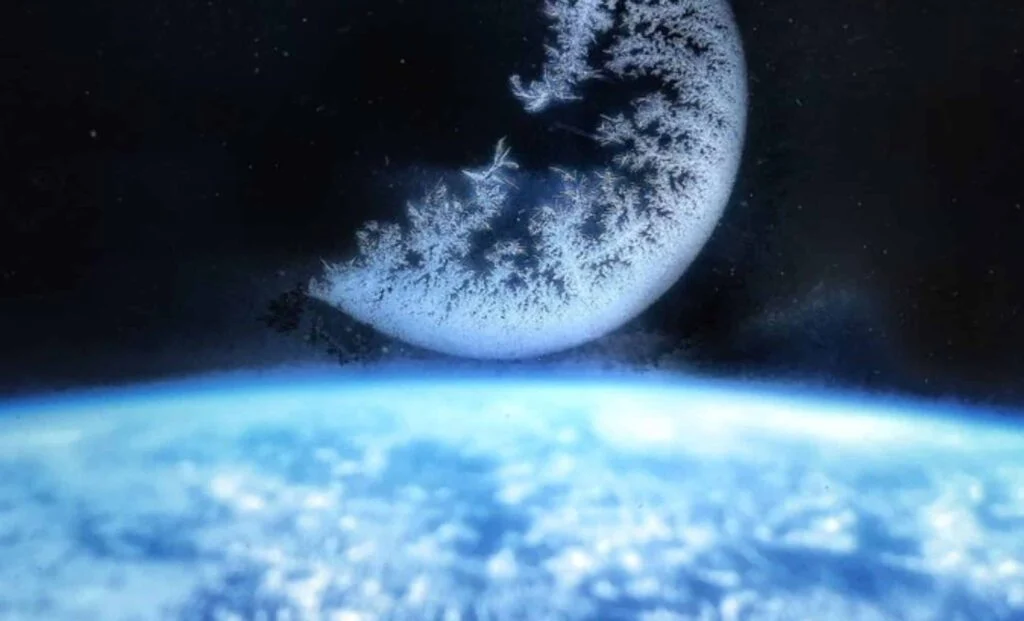
New Study Reveals Ice in Space Isn’t Entirely Amorphous After All
Ice in Space: Not So Disordered After All
“Ice in the rest of the universe has long been considered a snapshot of liquid water – that is, a disordered arrangement fixed in place. Our findings show this is not entirely true.”
Researchers from University College London (UCL) and the University of Cambridge have found that ice in space behaves differently than previously assumed. According to the study, ice that forms in extremely cold regions of space isn’t entirely amorphous, as scientists once thought.
Crystalline Surprises in Frozen Space
On Earth, ice forms in a crystalline structure because of relatively warm temperatures, which allow water molecules to organize into symmetrical patterns—like snowflakes. But in the deep cold of space, where temperatures can plunge to –148 or –328 degrees Fahrenheit (–100 or –200 Celsius), it was long believed that ice remained disordered.
“When plumes of water vapor from Saturn’s moon Enceladus spew into space, that water vapor freezes and snows back onto the icy moon’s surface,” the article explains. “But those snowflakes would, according to previous theories, not have the intricate structure of snowflakes on Earth. But now, new research suggests that it could, at least to a degree.”
Simulations Reveal Partial Crystallization
The researchers used computer simulations and X-ray diffraction to analyze the structure of low-density amorphous ice—commonly found across the cosmos. Two different simulations were run:
- One cooled water to –120°C at varying rates, producing ice that was up to 20% crystalline, with nanocrystals measuring just 3 nanometers across.
- The other started with evenly spaced molecules and then disordered them randomly, achieving even higher crystallinity, up to 25%.
“These are still simulations, so how do they stack up to reality?” the article asks. By firing X-rays through real samples of amorphous ice, the team observed molecular structures that matched their simulated results.
To further test their findings, the researchers re-crystallized the amorphous ice. “They found that the crystal structure that the ice adopted varied depending upon how the amorphous ice had been formed in the first place. Purely amorphous ice that is totally disordered should retain no memory of its earlier form, unless there is some crystalline structure remaining.”
Implications for Space Exploration and Origins of Life
“Ice is potentially a high-performance material in space,” said Michael B. Davis of UCL and Cambridge. “It could shield spacecraft from radiation or provide fuel in the form of hydrogen and oxygen. So we need to know about its various forms and properties.”
The findings may also impact theories about the origins of life on Earth. “Some of those organic ingredients for life are thought to have been transported to Earth on icy dust grains, and while these new findings about amorphous ice don’t rule that out, they do limit what’s possible.”
“This is because a partly crystalline structure has less space in which these ingredients could become embedded,” Davis added. “The theory could still hold true, though, as there are amorphous regions in the ice where life’s building blocks could be trapped and stored.”
A Deeper Look into Cosmic Ice
Low-density amorphous ice was first discovered in the 1930s, followed by high-density amorphous ice in the 1980s. In 2023, Davis’ team created a new form: medium-density amorphous ice. Remarkably, this form “has the peculiar property of having the same density as liquid water, so it neither floats nor sinks.”
But the team focused on low-density amorphous ice for this research. “We now have a good idea of what the most common form of ice in the universe looks like at an atomic level,” said Davis. “This is important as ice is involved in many cosmological processes, for instance in how planets form, how galaxies evolve, and how matter moves around the universe.”
The study was published on 7 July in the journal Physical Review B.